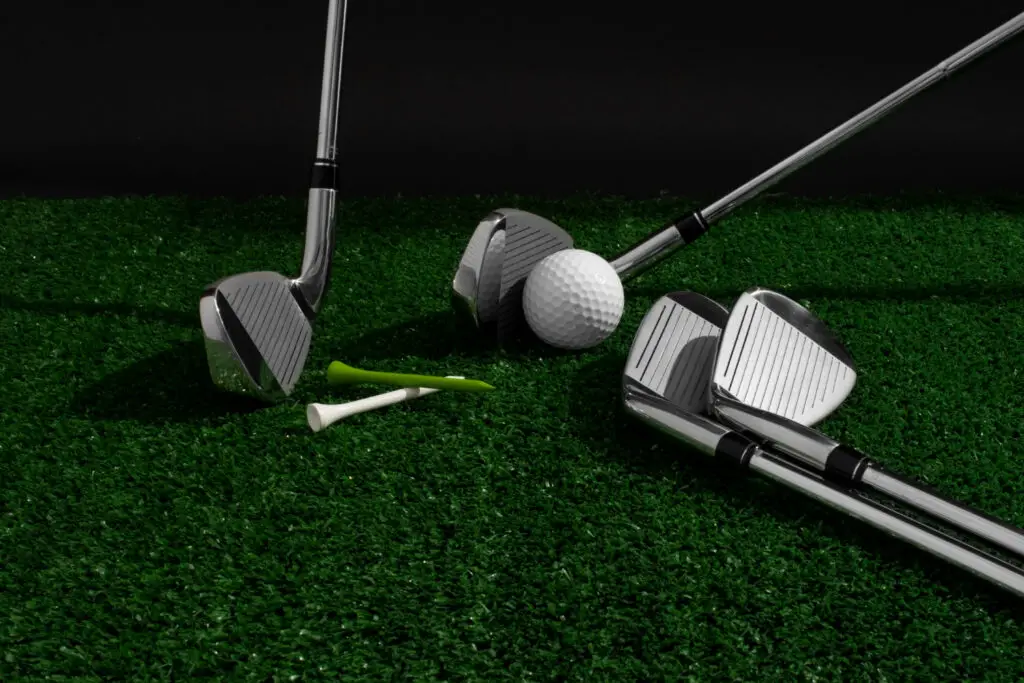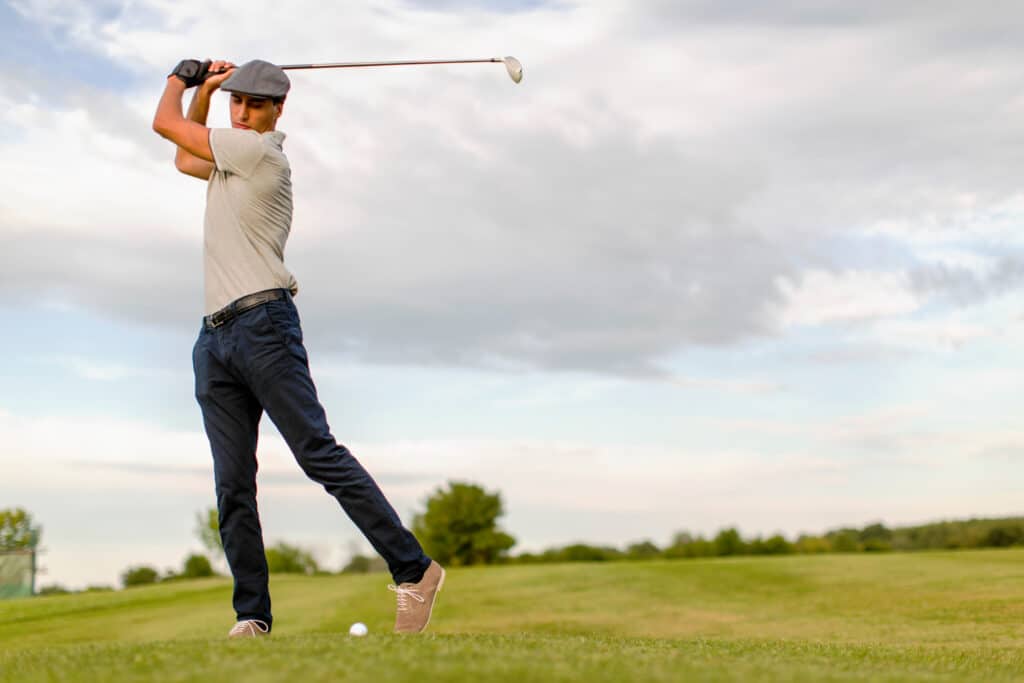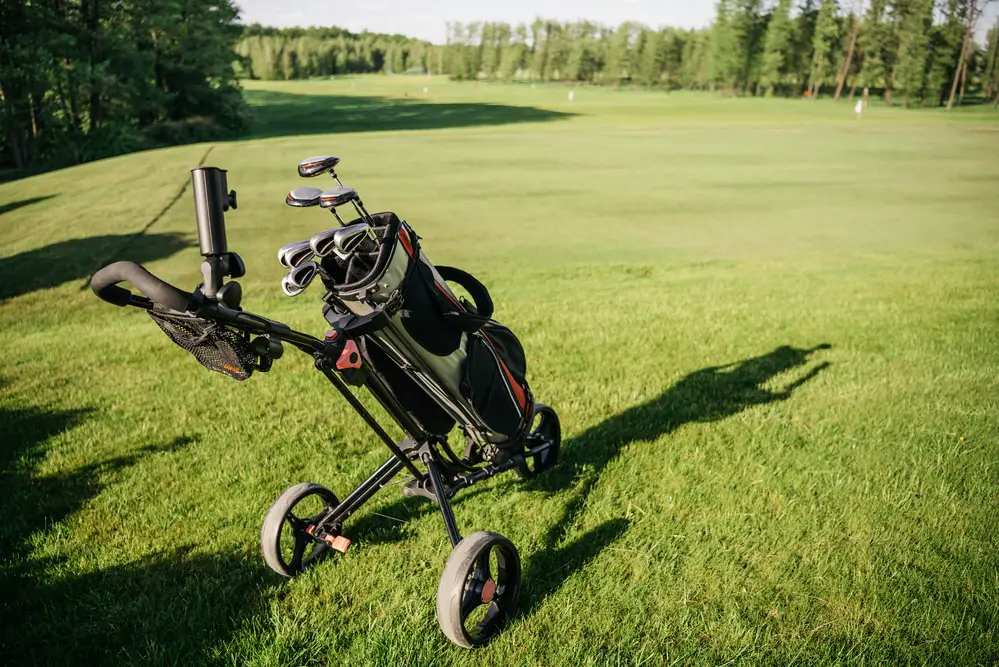Last Updated on November 23, 2023
Golf is an exciting sport that requires precision and skill. In order to maximise the distance of each golf shot, it is important for a golfer to know which club will travel the furthest. With so many different types of clubs available, understanding which one provides maximum yardage can be difficult. This article seeks to explain which type of golf club goes the furthest when hit correctly by discussing different design aspects and providing tips on optimisation techniques.
Distance Factors
The distance of a golf club shot is largely determined by the size and angle of the grip, as well as the spin rate. A larger grip will cause more drag on the ball when it leaves the club face, reducing its velocity. Conversely, a smaller grip can increase the speed at which it exits the clubface, resulting in greater distances. Furthermore, if the club face has an open or closed angle relative to impact with the ball, this also affects how far it travels.
Generally speaking, an open-faced club encourages greater launch angles and higher spin rates, which equates to longer shots. On the opposite end of the spectrum, a tightly angled club tends to reduce both factors allowing for straighter trajectories that travel further distances. Finally, low spin rates are typically associated with increased carry distance regardless of loft angle due to less air resistance caused by backspin created from high spin rates.

Aerodynamics and Impact on Distance
The aerodynamics of a golf club can have an impact on how far the ball will travel. Numerous factors contribute to this, such as:
- The angle and speed at which the clubhead strikes the ball
- The surface area of the clubface
- The shape of the clubhead’s sole
- The loft angle relative to the ground
These elements determine how much lift is generated when striking the ball, thus influencing its trajectory off the tee or fairway.
Moreover, there are two main ways in which aerodynamic forces affect distance; drag and lift. Drag occurs when air resistance causes backward motion, while lift results from an upward force created by a tilted face that propels it forward and up into higher trajectories. This effect is magnified with clubs possessing greater velocity due to increased momentum upon contact with the ball as well as larger areas of their heads, allowing for more efficient airflow over them during swings resulting in longer distances covered by shots hit with them.
Driver Vs Fairway Wood
The driver and the fairway wood are two of the longest clubs used in golf. When considering which club goes furthest, it is important to take into account a variety of factors such as swing speed, ball launch angle, spin rate, and more.
Typically, drivers have higher shafts than fairway woods and larger club heads that generate greater power at impact. This leads to increased ball velocity for drives compared to shots hit with a fairway wood. Additionally, drivers tend to promote a lower launch angle off the tee resulting in less air resistance and further distance covered by the ball during flight. Furthermore, many models offer adjustable settings allowing players to tailor their clubs according to their personal preferences or course conditions.
By contrast, fairway woods typically feature shorter shafts and smaller head sizes, meaning they produce less power than drivers on impact. However, when combined with lofted faces, this results in a higher launch angle than what can be achieved with a driver facilitating longer carry distances if carefully executed.

Loft Angle and Ball Flight Paths
The loft angle of a golf club is an important factor in determining the ball’s flight path. Loft angles range from very low to very high, with higher lofts resulting in more vertical launch angles and lower lofts creating flatter trajectories. Generally speaking, clubs with greater loft will travel shorter distances than those with less loft due to the increased air resistance caused by the more vertical launch angle. Conversely, clubs with less loft typically produce longer drives as they benefit from reduced air resistance during their descent.
In addition to affecting distance, different loft angles can affect accuracy due to the spin imparted on the ball at impact. Clubs with greater degrees of loft tend to impart more backspin on the ball, which helps keep it straighter off the tee. However, this also reduces maximum distance potential compared to a driver or fairway wood. Lower-lofted clubs like drivers and fairway woods create less spin but require better timing in order for shots to remain straight because if hit too early or late, they may cause the shot to go offline significantly.
Shaft Selection and Flexibility
The selection of a golf shaft is an important component in the overall performance of a golfer’s swing. The flex and material of the shaft can have an impact on how far the ball will travel when struck. Generally, stiffer flexes tend to produce more distance, while softer flexes generate less distance but better accuracy. Shaft materials such as steel and graphite also play a role in the shot distance. Steel shafts typically provide greater control at slower speeds, while graphite shafts are preferred for higher swing tempos due to their lighter weight.
In addition, it is important to consider that each individual has different swing mechanics, which may require specific shaft types or flex ratings. Therefore, players should experiment with various types of shafts until they find one that produces desired results according to their particular level of skill and tempo.
Club Weight and Balance Point
The weight of a golf club and its balance point are two important aspects to consider when trying to determine which club will go the furthest. Club weight affects swing mechanics, as heavier clubs require more energy for propulsion than lighter ones. A golfer must also be aware of where the centre of gravity lies on each club in order to optimise their performance.
Clubs with higher balance points require less effort from the golfer’s arms, while those with lower points shift more power into the core muscles used during a swing. As such, it is essential that golfers assess these elements prior to selecting a club they believe will travel farthest.
To maximise distance, golfers should choose a club based on their own individual needs and preferences rather than simply opting for one that looks most likely to hit long distances. It is beneficial to test different clubs before settling on an option so that one can get a sense of how the various weights and balance points affect their own swings.
Conclusion
It is important for golfers to understand the various elements that affect how far a golf club can go. Hybrid clubs are often more forgiving and offer greater distance than irons due to their larger sweet spot. The best ball for maximum distance will depend on individual swing speed and angle of attack; however, urethane cover balls typically provide more spin and roll than Surlyn-covered ones. Re-gripping clubs should be done every 6 months or so in order to maintain consistent performance from each club.
Lastly, choosing between stiff or regular flex shafts will come down to individual preference depending on desired shot shape (draw or fade). With all these factors taken into account, golfers can optimise their equipment set-up to maximise their driving distance off the tee.



